The 2018 ZS9V Robben Island International Lighthouse Weekend team had big plans. This year was the first time for FT8 and CW operations. It was the first year for 1KW linear amplifiers and it was the first year for 3 stations.
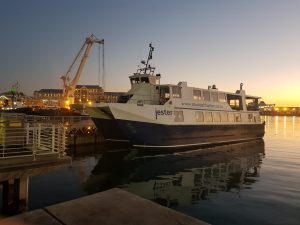
The team planned to leave for Robben Island on the Friday morning but on arrival at the ferry terminal the team got the bad news that all ferries for the day had been cancelled due to bad weather and rough sea conditions. This meant that the team had to load all equipment back into the vehicles and return for another attempt on the Saturday.
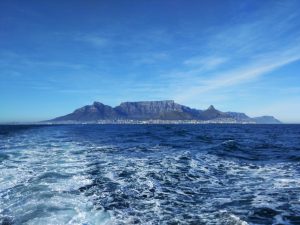
On Saturday morning, the weather was clear, and the team were able to go over with the ferry. The team split into two work parties, one setting up the CW station at the guesthouse and the other the Yagi station at the lighthouse. The team immediately took advantage of a 20m opening when they started operating at 13:15. The next step was to setup a station for the lower band 40/80m at the lighthouse technicians quarters. The team also installed a backup antenna – a vertical – at the technicians quarters.
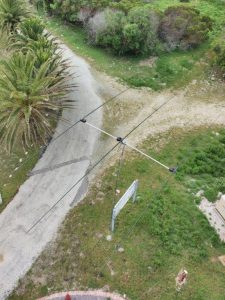
Due to coax limits, the team had to choose between the three-element 40m wire beam and the 160m dipole. Research showed that there were no recorded 160m contacts to Robben Island, so this guided the decision to opt for the 160m dipole. From 20:00 on Saturday evening they started calling on 160m on FT8, and by 22:42 the first contact was made with EA7JW by ZS1VDV. From there the team continued to work 15 160m contacts that evening. The team also attempted SSB contacts on 160m, but got no response to their CQ calls.
On Sunday the focus was to work Australia in the morning on the Yagi and CW station, and South Africa on the lower band station. Due to threatening weather, ZS1A and ZS1LS had to pack with about 1 hour notice and had to leave at 13:00, instead of their scheduled departure at 16:00. For the next two days, the remaining 4 members covered all 3 stations, made food and arranged logistics. After the bands closed on 20m, the Yagi was dismantled in the rain. The 160m station was still manned during Sunday evening, but only 2 contacts were made. By 01:30 the lighthouse station equipment was packed up.
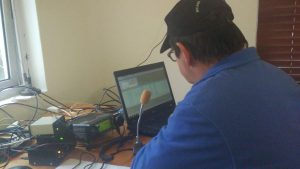
Monday morning started again at 05:00 with the team packing up the 160m antenna and also the lower band station. This was completed by 07:00 and ZS1AN and ZS1VDV caught the 08:00 ferry to Cape Town, instead of the 12:00 ferry they were scheduled to be on, since it was unclear if there were going to be more ferries that day. This further limited the operating time.
The CW team of ZS1ANF and ZS1OIN, kept going strong for Monday and caught the first ferry out on Tuesday morning.
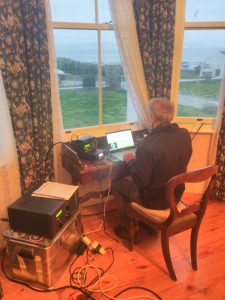
In total 3340 contacts were made during the expedition.
We would like to thank:
– Ms Rabia Damon, Marketing and Tourism Department, Robben Island Museum, for facilitating our trip;
– Lighthouse and Navigational Services, Transnet National Ports Authority, for access to the lighthouse and related buildings;
– Mr Peter Saaise, Robben Island Lighthouse Keeper, and his son Michael for logistical support;
– Mr Charles Wilmott M0OXO, for QSL management;
– Our Pilot stations on the support group;
– All the stations that persisted in order to make contact with us
Statistics for 2018:
MODE
SSB = 982
FT8 = 317
CW = 2041
Top 9 DXCC
QSOs Entity
531 Japan
393 Italy
445 European Russia
319 Germany
154 Ukraine
120 Poland
115 France
117 South Africa
107 Spain
In only 86 hours of operating, spread over three visits in 2016, 2017 and 2018, the team has worked 100 DXCC entities and made enough South African contacts to claim WAZS 100 awards with several endorsements and a WAZS 200 award.